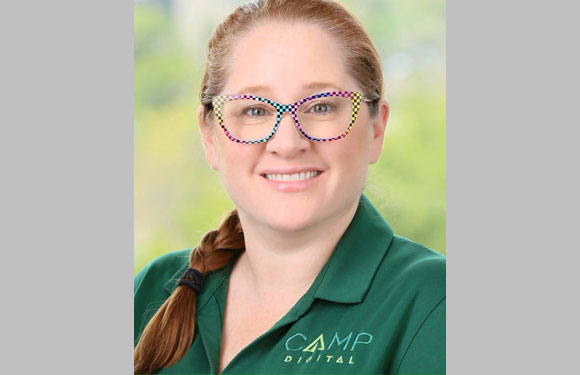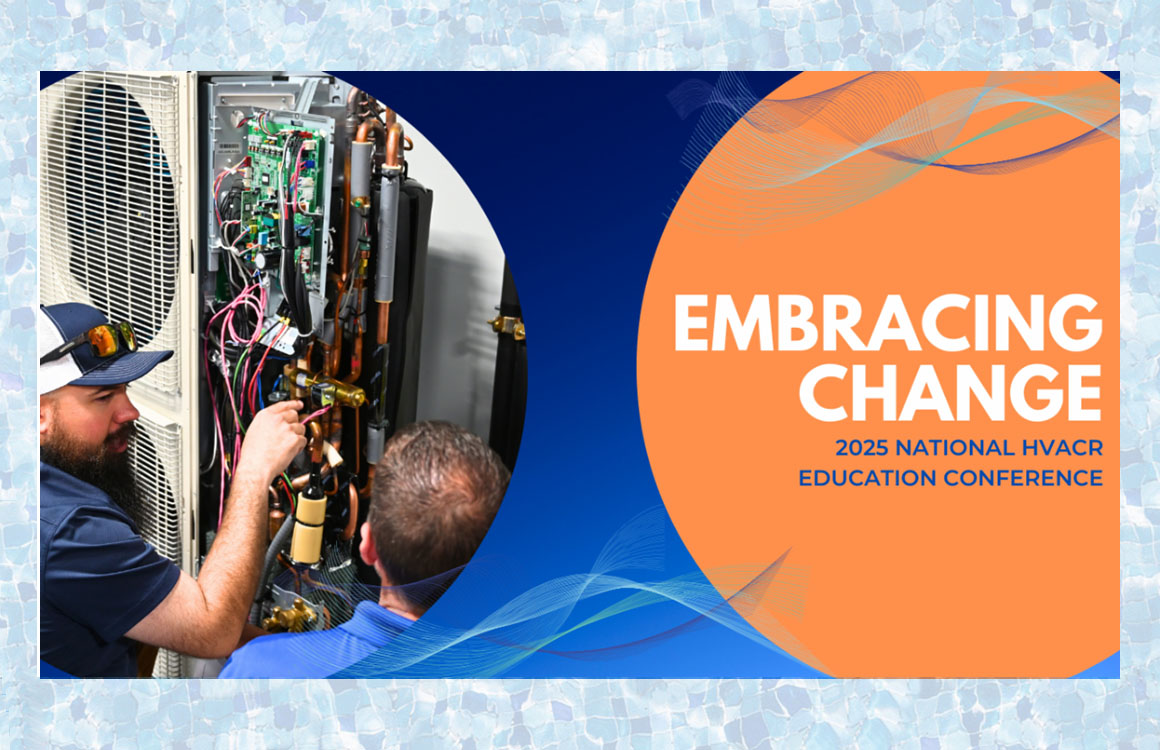
News
An Expert’s Take on “Natural” Refrigerants
globalFACT’s Executive Director Jordan Smith Interviews
Refrigerants Expert Dr. Richard Powell on So-Called “Natural” Refrigerants

Let’s start with the obvious question: what is the biggest misperception about so-called “natural” refrigerants?
Ammonia, carbon dioxide and hydrocarbons, sold as refrigerants, are manufactured in large chemical plants. In other words, they are “artificial.” They are “synthetic chemicals,” not “natural.” To contrast ‘chemical’ fluorocarbon refrigerants with so-called ‘natural’ refrigerants is at best disingenuous, and arguably dishonest. The same can be said about other misleading refrigerant “weasel words” attempting to draw a contrast, like “clean,” “equitable,” and “sustainable.”
Why is it important for end-users to understand how so-called “natural” refrigerants are manufactured?
Through advertising, for example in relation to food, we have become accustomed to ‘natural’ having the connotation of being ‘benign’, ‘wholesome,’ and ‘safe’. Ammonia, hydrocarbons and carbon dioxide, at high concentrations that could occur in the vicinity of a leak, are undeniably hazardous. Describing a refrigerant as ‘natural’ conveys a false impression, especially to the general public, of intrinsic safety. This is clearly wrong.
Are there benefits that HFOs and blends offer that so-called “natural” refrigerants do not?
The HFOs, and blends containing them, combine very low global warming potentials with minimum hazard at point of use. They are compatible with existing refrigeration and air conditioning technology without requiring major engineering changes or the adoption of more severe operating precautions than those presently used by the industry.
Although good working practices minimize refrigerant leaks, they do happen. The minimal flammability and low toxicity of HFOs afford much greater protection to the user or service engineer than the obviously hazardous “natural” refrigerants.
What are some potential repercussions of the misconceptions around so-called “natural” refrigerants?
For my own work, I have been able to consider both “natural” and fluorine containing refrigerants, balancing their technical, environmental and safety merits against the requirements of end users. Safety wise “natural” refrigerants leave much to be desired. “Natural,” unfortunately, doesn’t mean “safe.”
Flammable hydrocarbon-based materials are implicated in the 2017 London Grenfell Tower tragedy when, horrifically, 72 people lost their lives, an event that caused me to reconsider my own work on hydrocarbon refrigerants.
Since Grenfell, my worry about hydrocarbon refrigerants has been further increased by the Electrotechnical Commission IEC pronouncement to increase the allowed maximum hydrocarbon charge in small refrigeration units from 150g to 500g.
The Health and Safety Executive, an UK government agency, notes that carbon dioxide has been recognized as a hazardous substance for over 100 years, classifying the gas as a ‘substance hazardous to health’. About 90 deaths per year occur in the U.S. because of carbon dioxide accumulation in confined spaces. The gas is not only an asphyxiant, but also an intoxicant that can cause tremors, confusion, and pain at high concentrations. Installers of CO2 refrigeration equipment and their customers must appreciate that adequate precautions are needed to minimize the risk of a dangerous incident.
In my view the refrigeration and air conditioning industries need to learn from the Grenfell tragedy. Are hazardous “natural” refrigerants systems as safe as HFO based systems when retrofitted into existing buildings? Ammonia is an industrial refrigerant favored since the 1870s for large plant installations especially in the food processing, ice rinks and brewing industries. Legionnaires’ disease from water-cooled condensers is readily prevented by bactericide additions. Yet, despite years of experience, fatal incidents still regularly occur.
It must not be forgotten that as a system becomes more complex the chance of malfunction increases. It should be failsafe.
Is safety the only consideration operators should consider before switching to a refrigerant such as ammonia, CO2, or hydrocarbons?
For an equipment supplier, installer, or operator, the first consideration must be safety, but it’s not the only consideration.
Second must be environmental impact. A so-called “natural” refrigerant manufactured in a chemical plant, may have an effect on the environment that is not immediately obvious. For example, feedstock methane is converted into ammonia and carbon dioxide. It’s necessary in production, but it’s a greenhouse gas that leaks during transportation, causing a negative environmental impact the end user is unaware of.
Third must be efficiency. Does it meet the user’s requirements for performance and cost? Don’t make a switch without understanding the extra responsibilities a new refrigerant requires you to take on.
Any of these factors could rule out a “natural” refrigerant for particular installation, even if it passed the other two with flying colors.
Speaking of environmental impact — is GWP the ultimate indicator when considering environmental sustainability?
GWP is a simplification. It has technical limitations. GWP is OK for comparing the emissions of the contributing gases, CO2, methane, nitrous oxide and fluorine-containing fluids on a common basis, expressed as mTe CO2 equivalent.
But the major contribution to global warming from all cooling and heat pumping technologies, including hazardous “natural” refrigerants, arises from their consumption of energy. Improving the energy efficiency of fridge and A/C units can make a significant reduction on global warming. This is quantified by the ‘Total Equivalent Warming Impact’ (TEWI) concept that combines the direct and indirect contributions of a cooling technology to global warming, a parameter that is more scientifically sophisticated than GWP.
Although GWP has been adopted by governments to regulate the phase-down of HFCs, it grossly exaggerates the differences between “natural” refrigerants and other options compared to TEWI.
Are there ways to minimize environmental impact besides switching to a different refrigerant?
Equipment manufacturers have progressively improved the performance and reliability of their products. Operating lifetimes of 20 to 30 years are common, especially for larger installations. The premature scrapping of HFC containing equipment, which is in good working order, merely to install a “natural” refrigerant unit makes neither good environmental nor economic sense. Disposing of, or even recycling, defunct equipment consumes valuable resources.
Governments world-wide are forcing the phase-down of higher GWP refrigerants by progressively introducing more severe regulations or GWP-based taxes. But this does not mean existing equipment needs to be junked. Refrigerant manufacturers have responded by developing lower GWP refrigerants, typically blends containing HFOs, that can be safely retrofitted into existing machines without loss in performance. This allows an orderly move to low GWP refrigerants, notably the HFOs, as equipment reaches the end of its working life.
‘Natural’ refrigerants cannot be retrofitted into equipment designed for non-flammable, low toxicity HFCs because of their intrinsic hazards.
What can all of this teach us about the future of refrigerants?
Simply put: no refrigerant can be dismissed outright. Even the most ardent promoters of so-called “natural” refrigerants are willing to countenance refrigerants with GWPs up to 250 where TEWI values suggest this is warranted. I interpret this as a recognition that “natural” refrigerants will not be able to meet the cooling industry’s needs. In other words, the HFO refrigerants have a future because the “natural” refrigerants have problems.
What guidance would you offer end users in choosing between so-called naturals against other refrigerant options?
“Natural” refrigerants might be considered as the “silver bullet” providing an obvious answer to the higher-GWP HFCs. Hopefully my answers today have helped debunk that myth.
Humanity needs cooling systems and thus refrigerants for its health and well-being, but without compromising the safety of the users or the global environment. HFOs can do this. Hazardous ‘natural’ refrigerants can’t.
About Jordan Smith
Jordan Smith has served as Executive Director of the Global Forum for Advanced Climate Technologies (globalFACT) since its inception in early 2018. He has over 20 years of experience providing public policy advice and representation on federal legislative and regulatory issues, with special emphasis on energy, environmental, natural resource, and healthcare matters. Mr. Smith’s experience includes developing and leading education and advocacy coalitions central to some of the most challenging public policy debates in the U.S. and across the globe.
About Dr. Richard Powell
Dr. Richard Powell holds a BSc and PhD in chemistry from King’s College London. Upon graduation, Dr. Powell completed two years of postdoctoral work at Rutgers University before joining ICI Mond Division, Runcorn, in 1970 to work on specialty fluorine chemicals before moving into ICI’s program to develop hydrofluorocarbon (HFCs) fluids as replacements for the ozone-depleting chlorofluorocarbons (CFCs). Dr. Powell has conducted research on high-temperature heat pump fluids and replacements for ozone depleting fluids, setting up ICI’s refrigerant application lab. Dr. Powell is a consultant to Refrigerant Solutions Ltd, developing the “REFSOL” (RS) range of HFC blends that can be retrofitted into existing CFC and HCFC equipment. More recently, he has developed RS HFC/HFO blends to replace higher GWP HFC refrigerants.














